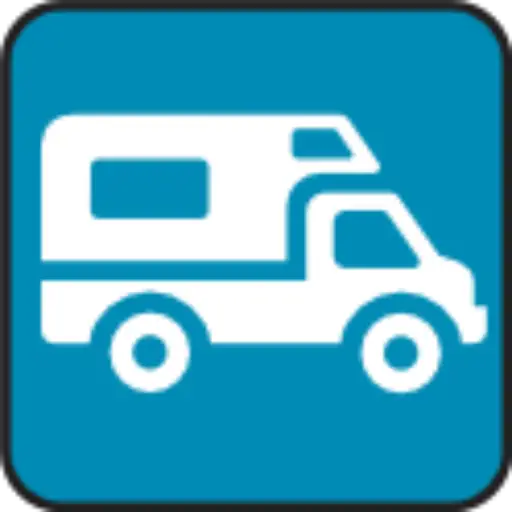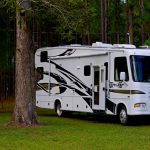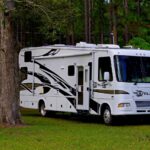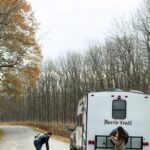Imagine swapping your cramped home office for a panoramic mountain view while dialing into your next Zoom meeting. Sounds like a dream, right? Well, thanks to the remote work revolution, this dream is becoming a reality for millions—and it’s reshaping RV usage statistics in ways no one saw coming. From a surge in younger owners to longer stays and full-time RV living, the open road is now the new office for a growing tribe of digital nomads.
In this article, we unpack the latest data, reveal surprising demographic shifts, and explore the tech innovations powering this mobile lifestyle. Curious how satellite internet like Starlink Roam is changing the game? Or what challenges remote-working RVers face daily? Stick around—we’ve got the inside scoop from RV Brands™ experts who live and breathe this lifestyle.
Key Takeaways
- Remote work has driven a 50% increase in median annual RV usage, turning weekend trips into extended work-travel adventures.
- The average RV owner is getting younger, with 43% now traveling with kids under 18, reflecting a family-friendly shift.
- Reliable connectivity is king: technologies like Starlink Roam and cellular boosters are essential for working on the go.
- The RV industry is innovating with dedicated office spaces, solar power, and smart tech to meet remote workers’ needs.
- Challenges like power management and work-life balance exist but are increasingly manageable with smart planning and gear.
Ready to explore the freedom of working from anywhere? Let’s hit the road!
Table of Contents
- ⚡️ Quick Tips and Facts: The Remote Work RV Revolution in a Nutshell
- 🗺️ The Open Road Beckons: A Brief History of RVing and the Digital Nomad Surge
- 📈 Unpacking the Data: How Remote Work is Reshaping RV Usage Statistics
- 🚀 Driving the Demand: Key Factors Fueling the Remote Work RV Boom
- 🔍 Who’s Hitting the Road? New RV Owner Demographics & Insights
- 👨👩👧👦 Young Families & the RV Lifestyle: Balancing Work and Adventure
- 🧑💻 Millennials & Gen Z RV Enthusiasts: The New Wave of Road Trippers
- 😷 Pandemic Purchasers: How COVID-19 Accelerated the RV Trend
- 🔄 Former Owners & Returnees: Rediscovering the Joy of RVing
- ✨ The “Intenders”: What Future RVers Are Looking For
- 🚧 Potholes on the Pavement: Challenges of Remote Work RVing
- 💡 Smart Solutions for the Modern RV Remote Worker
- 🏭 The RV Industry’s Response: Innovations and Adaptations
- 🔮 The Road Ahead: Future Trends and Predictions for RV Usage
- 🎉 Conclusion: The Enduring Appeal of the RV Lifestyle in a Remote World
- 🔗 Recommended Links: Your Go-To Resources for RV Remote Work
- ❓ FAQ: Your Burning Questions About Remote Work & RVing Answered
- 📚 Reference Links: Our Sources & Further Reading
⚡️ Quick Tips and Facts: The Remote Work RV Revolution in a Nutshell
Welcome, fellow road warriors! Before we dive deep into the nitty-gritty of how your newfound freedom from the cubicle is shaking up the RV world, let’s get you up to speed with some jaw-dropping highlights. Think of this as the espresso shot before the long, scenic drive.
- The Great Un-Tethering: The rise of remote work has been the single biggest catalyst for the modern RV boom.
- Usage is Skyrocketing: Get this—the median annual usage of RVs has jumped by a whopping 50%, from 20 days in 2021 to 30 days per year today! People aren’t just weekend warriors anymore.
- The New Face of RVing: The average RV owner is getting younger. The median age has dropped from 53 to just 49.
- Work from…Wherever: A significant 22% of RV owners report that someone in their household is a full-time remote worker.
- The RV Office is Real: Of those remote workers, 54% are actively working from inside their RV. Talk about a corner office with a view!
- Connectivity is King: The single most critical piece of gear for a remote-working RVer? Reliable internet. This has led to a massive surge in demand for solutions like Starlink Roam.
- First-Timers Welcome: A massive 36% of current RV owners are first-timers, indicating a huge influx of new enthusiasts drawn by the work-from-anywhere lifestyle.
🗺️ The Open Road Beckons: A Brief History of RVing and the Digital Nomad Surge
Let’s hop in our time machine for a second, shall we? For decades, RVing was the sacred domain of retirees and summer vacationers. It was about escaping from work. The goal was to disconnect, unwind, and maybe see the world’s largest ball of twine. But oh, how the tables have turned!
The concept of the “digital nomad” isn’t brand new, but it was a fringe movement for the longest time. Then, the world changed. Suddenly, millions of people were told their office was… well, wherever they had a laptop and an internet connection. A lightbulb went off for thousands. “Why work from my spare bedroom when I could work from the Grand Canyon?”
This seismic shift has fundamentally altered the DNA of the RV community. It’s no longer just about retirement; it’s about redefining the entire work-life balance. The RV has transformed from a vacation vehicle into a viable, year-round mobile headquarters for a new generation. We’re witnessing a full-blown renaissance, and it’s being fueled by Wi-Fi signals and a universal craving for freedom.
📈 Unpacking the Data: How Remote Work is Reshaping RV Usage Statistics
Alright, data nerds, this one’s for you! We love a good story, but the numbers are what truly paint the picture of this incredible transformation. The impact of remote work isn’t just a feeling; it’s a verifiable, statistical phenomenon. We’ve been poring over the latest RV statistics and industry reports, and the findings are fascinating.
📊 The Great Migration: Shifting Demographics of RV Owners
The stereotype of the gray-haired snowbird is officially outdated. The RVIA’s 2025 Go RVing report confirms what we’ve been seeing at campgrounds for years: the crowd is getting younger and more diverse.
| Demographic Shift | 2021 Data | 2025 Data | The “Why” Behind the Change |
|---|---|---|---|
| Median Owner Age | 53 years old | 49 years old | Remote work allows younger professionals (35-54 age range now makes up 46% of owners) to hit the road without quitting their jobs. |
| First-Time Owners | N/A | 36% of market | The barrier to entry has lowered mentally; it’s now seen as a practical lifestyle, not just a retirement dream. |
| Household Composition | Less prevalent | 43% have kids < 18 | “Roadschooling” and family adventures are more feasible when parents’ work schedules are flexible. |
| Diversity | Growing | 30% of owners | The appeal of freedom and travel is universal, and the remote work trend has made it accessible to a wider range of cultural backgrounds. |
As the RVIA report puts it, “Younger buyers are increasingly attracted to RV ownership as a means to accommodate remote work and alternative lifestyles.” It’s a fundamental shift from a recreational hobby to a lifestyle enabler.
🛣️ Miles and Memories: Increased RV Travel and Usage Patterns
With the ability to work from anywhere, RVers are no longer confined to short trips. That jump to 30 days of median annual usage is a direct result of people blending work and travel. Instead of a frantic two-week vacation, people are taking “work-cations” that last a month or more.
This changes everything:
- ✅ Longer Stays: People are spending more time in one location, truly getting to know an area.
- ✅ Mid-Week Travel: Why fight the weekend traffic when you can travel on a Tuesday and work from the road?
- ✅ Off-Season Exploration: The traditional “camping season” is becoming a year-round affair for many.
🏡 Home on Wheels: The Rise of Full-Time RV Living and Extended Trips
This leads us to the ultimate expression of the remote work revolution: full-time RVing. What was once a niche community has exploded in popularity. People are selling their sticks-and-bricks homes, shedding their possessions, and embracing a minimalist, mobile lifestyle.
The ability to maintain a stable, high-paying career while living in an RV has made this dream a reality for countless individuals and families. It’s the perfect storm of financial freedom, geographic independence, and professional stability.
💻 The Digital Nomad’s Dream: RVs as Mobile Offices
The RV is no longer just a place to sleep; it’s a fully functional office. As the data shows, over half of remote-working RV owners are regularly clocking in from their rig. This has spurred a massive demand for RVs with dedicated workspaces, better power systems, and, of course, rock-solid internet.
🚀 Driving the Demand: Key Factors Fueling the Remote Work RV Boom
So, what’s the magic formula? Why are so many people trading their ergonomic office chairs for a driver’s seat? It’s a cocktail of powerful motivators.
1. Flexibility and Freedom: Escaping the 9-to-5 Grind
This is the big one. The allure of waking up to a new backyard every week is intoxicating. Remote work has severed the geographical chain that tied employees to a specific city. You can now chase the warm weather, follow your passions (hiking, fishing, visiting national parks), and design a life that isn’t dictated by your commute.
2. Cost-Effectiveness: A Different Perspective on Living Expenses
Now, hold on—isn’t RVing expensive? It can be, but let’s reframe the question. Compared to a mortgage, property taxes, HOA fees, and multiple utility bills in a high-cost-of-living area, the numbers can start to look very appealing. For many, the cost of a monthly RV payment, insurance, and campground fees is significantly less than their previous stationary life. It’s not about being cheap; it’s about reallocating resources towards experiences rather than possessions.
3. Mental Well-being: The Therapeutic Benefits of Nature and Travel
The top motivators for RVing are consistently cited as unwinding, spending time in nature, and visiting beautiful locations. The remote work lifestyle allows people to integrate these therapeutic activities into their daily lives. Feeling stressed? Take a lunch break by a mountain stream. Need inspiration? Your view is no longer a gray cubicle wall but a stunning sunset over the desert.
4. Technological Advancements: Staying Connected on the Go
None of this would be possible without the tech to back it up. The single greatest enabler of this movement has been the advancement in mobile internet technology. The days of hunting for a coffee shop with decent Wi-Fi are numbered. This is where companies like Starlink have become absolute game-changers.
🔍 Who’s Hitting the Road? New RV Owner Demographics & Insights
Let’s put a face to the statistics. The new wave of RVers is a vibrant and varied bunch, each with their own unique story and motivation for embracing the mobile lifestyle.
👨👩👧👦 Young Families & the RV Lifestyle: Balancing Work and Adventure
With 43% of RV owners now having children under 18, the family dynamic on the road has transformed. These aren’t just summer trips anymore. Parents are juggling Zoom calls and deadlines while their kids get a real-world education exploring national parks.
However, it’s not always a picturesque postcard. As one RVer shared in a featured video, working remotely with two young children was incredibly challenging. She highlighted the constant stress of finding reliable cell signals for two full-time jobs and the difficulty of juggling work and childcare in a confined space. Her ultimate advice? “I would not do it again with really little kids with…two working parents. That part was really hard to juggle and quite stressful.” It’s a crucial perspective that balances the dream with a dose of reality.
🧑💻 Millennials & Gen Z RV Enthusiasts: The New Wave of Road Trippers
Forget the retirement bingo nights; the campground is now just as likely to have a group of 30-somethings sharing tips on the best cellular boosters. This demographic, raised on technology and valuing experiences over things, is a natural fit for the digital nomad lifestyle. They are tech-savvy, adaptable, and eager to leverage their remote work flexibility to see the country.
😷 Pandemic Purchasers: How COVID-19 Accelerated the RV Trend
The pandemic acted as a massive accelerant. It not only normalized remote work on a global scale but also made RVing one of the safest ways to travel and vacation. This created a surge of “COVID Buyers” who might have been on the fence but were pushed to take the plunge. Many have since discovered they love the lifestyle and have stuck with it.
🔄 Former Owners & Returnees: Rediscovering the Joy of RVing
We’re also seeing a fascinating trend of people returning to the lifestyle. Perhaps they owned an RV years ago but sold it due to work constraints. Now, with the freedom of remote work, they’re coming back, often with upgraded rigs and a renewed passion for the open road.
✨ The “Intenders”: What Future RVers Are Looking For
The pipeline is packed! An estimated 16.9 million households are seriously considering buying an RV in the next five years. This group is even younger and more diverse than current owners, signaling that this trend is not just a fad but a long-term shift in how people want to live and work. They are looking for RVs with smart technology, sustainable features like solar power, and flexible floor plans that can accommodate both work and family life.
🚧 Potholes on the Pavement: Challenges of Remote Work RVing
Okay, let’s pump the brakes on the idyllic fantasy for a moment. Life on the road, especially when you’re juggling a career, is not without its speed bumps. We wouldn’t be your trusted guides at RV Brands™ if we didn’t give you the full, unvarnished truth.
🌐 Connectivity Conundrums: Finding Reliable Internet on the Road
This is the number one challenge, bar none. A dropped video call with your boss can be a career-limiting move. You become obsessed with signal bars and download speeds.
- ❌ Campground Wi-Fi: Let’s be honest, it’s notoriously unreliable. It might be fine for checking email at 3 AM, but don’t count on it for a high-stakes presentation.
- ❌ Cellular Dead Zones: Even with boosters, there are vast swaths of this beautiful country where cell service is a myth.
- ✅ The Satellite Solution: This is where services like Starlink have become the holy grail for remote workers, providing high-speed internet in places where it was previously impossible.
🔌 Powering Your Office: Managing RV Electrical Needs
Your laptop, monitors, printers, and internet gear all need juice. Relying solely on a campground’s electrical hookup limits where you can go.
- Battery Drain: Standard RV batteries won’t last long running a full office setup.
- Boondocking Blues: If you want to camp off-grid (“boondocking”), you need a robust power solution. This often means a significant investment in solar panels, a generator, and upgraded lithium batteries from brands like Battle Born.
⚖️ Work-Life Balance: The Art of Disconnecting in Paradise
Ironically, when your home is everywhere, it can be hard to “leave” the office. The temptation to answer one more email while watching the sunset can be overwhelming. As noted in the featured video, creating a clear separation between work time and personal time is a major hurdle when your office and living space are one and the same.
🛠️ Maintenance & Logistics: Keeping Your Mobile Office Running Smoothly
An RV is a rolling earthquake. Things break. A flat tire or a plumbing issue isn’t just an inconvenience; it can derail your entire workday. You have to be a planner, a mechanic, and a logistician all in one. This includes planning travel days around your work schedule and always having a backup plan.
💡 Smart Solutions for the Modern RV Remote Worker
Don’t let the challenges scare you off! For every problem, there’s a clever solution. The modern RVer has an arsenal of tech and tools to make the work-from-the-road life not just possible, but seamless.
1. Satellite Internet & Cellular Boosters: Your Digital Lifeline
This is non-negotiable. A multi-pronged approach is best.
- Satellite: Starlink Roam has revolutionized remote connectivity. It offers high-speed internet almost anywhere with a clear view of the sky. As one full-time RVer, Walter, stated, “We’ve had perfect internet everywhere we’ve been.”
- Cellular: A cell signal booster (like those from weBoost) can amplify a weak signal, turning one bar into a usable connection.
- Hotspots: Having dedicated mobile hotspots from multiple carriers (e.g., Verizon and T-Mobile) provides redundancy.
Here’s a quick look at the popular Starlink Roam options:
| Feature | ROAM 50GB | ROAM UNLIMITED |
|---|---|---|
| Best For | Infrequent travelers, low data users | Full-time RVers, remote workers |
| Data | 50 GB of Roam Data | Unlimited Roam Data |
| In-Motion Use | ✅ Supported | ✅ Supported |
| Key Benefit | Lower monthly cost for occasional use | Peace of mind, no data caps |
👉 Shop Starlink for RVs on:
- Starlink Roam: Starlink Official Website
2. Solar Power & Lithium Batteries: Sustainable Energy for the Road
To truly be free, you need to cut the cord—the power cord, that is.
- Solar Panels: Kits from brands like Renogy or Zamp Solar allow you to generate your own power from the sun.
- Lithium Batteries: While more expensive upfront, lithium batteries (like from Battle Born or Dakota Lithium) are lighter, last longer, and provide more consistent power than traditional lead-acid batteries. They are the gold standard for serious boondockers.
- Generators: A quiet inverter generator (like those from Honda or Champion) is a great backup for cloudy days or when you need to run high-power appliances like the air conditioner.
3. Planning & Preparation: Tools and Apps for Seamless Travel
Spontaneity is great, but planning is what makes this lifestyle sustainable.
- Campground Apps: Apps like Campendium, The Dyrt, and RV LIFE are essential for finding campsites. They include user reviews that often have details on cell signal strength.
- Route Planning: A dedicated RV GPS (from Garmin) or an app like RV LIFE Trip Wizard will help you avoid low bridges and roads unsuitable for your rig.
- Internet Planning: Apps like Coverage? and OpenSignal can help you scout out cellular coverage before you even arrive at a new location.
🏭 The RV Industry’s Response: Innovations and Adaptations
The RV industry isn’t sleeping at the wheel—they’ve seen this trend coming and are adapting quickly. As the RVIA notes, the industry is undergoing a “significant transformation, fueled by younger and more diverse buyers, evolving lifestyle needs, and increasing technological integration.”
🚐 RV Design Evolution: Features for the Remote Worker
Manufacturers are rolling out new models with remote workers in mind.
- Dedicated Office Space: We’re seeing more floor plans that replace a bunkhouse or a less-used piece of furniture with a built-in desk, complete with USB ports and accessible power outlets. Brands like Keystone’s Fifth Wheel RVs and Grand Design are leading the charge.
- “Tech-Ready” Packages: Many new RVs come pre-wired for solar panels and cellular/Wi-Fi boosters, making installation much easier.
- Multi-Purpose Furniture: Dinettes that easily convert into comfortable standing desks or sofas with hidden workstations are becoming common. Check out the latest innovations from top Fifth Wheel RV Manufacturers to see these features in action.
📈 Rental Market Boom: Trying Before Buying
The explosion of the remote work trend has been a massive boon for the RV rental market. Platforms like RVShare and Outdoorsy allow “intenders” to test out the lifestyle before making a huge financial commitment. It’s the perfect way to see if you can really handle a conference call from a campervan.
🏕️ Campground Adaptations: More Amenities for Extended Stays
Campgrounds are also getting in on the action. They recognize that their clientele is changing.
- Upgraded Wi-Fi: Many are investing heavily in high-speed, park-wide Wi-Fi systems.
- Business Centers: Some higher-end resorts are adding co-working spaces or business centers with reliable internet and printing services.
- Long-Term Stay Incentives: More campgrounds are offering attractive monthly rates to cater to the growing number of full-timers and extended travelers.
🔮 The Road Ahead: Future Trends and Predictions for RV Usage
So, where is this all heading? Is this a temporary boom or a permanent lifestyle shift? We at RV Brands™ are betting on the latter. Here’s what we see on the horizon:
- Even Greater Tech Integration: Expect more “smart RVs” with integrated systems for managing power, connectivity, and security from a single app. We’ll see more RVs coming from the factory with satellite internet systems as a standard option.
- The Rise of Electric RVs: As battery technology improves, electric RVs and tow vehicles will become more viable, appealing to an environmentally conscious generation of travelers. Brands like Winnebago and Thor are already deep in development.
- Community-Focused Living: We predict a rise in “nomad hubs” or long-term campgrounds designed specifically for remote workers, featuring robust amenities like co-working spaces, community kitchens, and social events.
- Subscription-Based RVing: We may see more services that offer an all-inclusive subscription model, providing the RV, insurance, maintenance, and even campground bookings for a single monthly fee.
The line between work, travel, and life will continue to blur, and the RV will be at the very center of this exciting new frontier. The question is no longer “Can I work from an RV?” but “What’s stopping me?”
🎉 Conclusion: The Enduring Appeal of the RV Lifestyle in a Remote World
Well, fellow adventurers, what a ride it’s been! The impact of remote work on RV usage statistics isn’t just a blip on the radar—it’s a full-blown revolution reshaping how we live, work, and explore. From younger, more diverse owners to the rise of full-time RV living, the data and stories all point to one undeniable truth: the RV lifestyle is evolving into the ultimate freedom machine for the modern workforce.
We’ve seen how technology like Starlink Roam is breaking down connectivity barriers, enabling you to be productive from the remotest mountain top or desert valley. The challenges? Sure, they exist—from power management to work-life balance—but smart solutions and industry innovations are making this lifestyle more accessible and sustainable every day.
If you’re on the fence about taking your office on the road, remember this: the RV lifestyle isn’t just about travel; it’s about reclaiming your time, your space, and your sanity. Whether you’re a young family roadschooling your kids, a millennial chasing sunsets between Zoom calls, or a seasoned RVer returning to the fold, the road ahead is wide open and full of promise.
So, pack your laptop, grab your solar panels, and hit the road. Your new office has wheels—and the horizon is calling.
🔗 Recommended Links: Your Go-To Resources for RV Remote Work
👉 CHECK PRICE on:
-
Starlink Roam Satellite Internet:
Starlink Official Website | Amazon Starlink Search | RVShare Starlink Search -
Battle Born Lithium Batteries:
Battle Born Official Website | Amazon Battle Born Search -
weBoost Cellular Signal Boosters:
weBoost Official Website | Amazon weBoost Search -
Renogy Solar Panel Kits:
Renogy Official Website | Amazon Renogy Search -
Honda Inverter Generators:
Honda Power Equipment | Amazon Honda Generator Search
Recommended Reading:
-
The Digital Nomad Handbook: How to Work Anywhere and Live Everywhere by Lonely Planet
Amazon Link -
Full-Time Freedom: How to Live in an RV and Work Remotely by Jason & Nikki
Amazon Link
❓ FAQ: Your Burning Questions About Remote Work and RVing Answered
How has remote work influenced the increase in RV travel and usage?
Remote work has unshackled employees from fixed locations, allowing them to blend work and travel seamlessly. This newfound flexibility has led to a 50% increase in median annual RV usage, with many owners extending trips from weekends to weeks or months. The ability to maintain a career while exploring new destinations has transformed RVs into mobile offices and homes, driving a surge in both first-time and returning RV owners.
What demographic changes in RV ownership are linked to remote work trends?
The demographic profile of RV owners is shifting dramatically:
- The median age has dropped from 53 to 49, reflecting younger professionals embracing the lifestyle.
- Families with children under 18 now make up 43% of owners, attracted by the ability to combine work and family travel.
- Diversity is increasing, with growth audiences (Hispanic-Americans, African Americans, Asian-Americans, LGBTQ+) now representing 30% of owners.
- 36% of owners are first-time buyers, many motivated by remote work opportunities.
These changes reflect a broader cultural shift towards valuing flexibility, experience, and lifestyle over traditional homeownership.
Are remote workers spending more time living in RVs compared to traditional homes?
Yes! The rise of full-time RV living is a direct consequence of remote work. Many owners are trading traditional homes for mobile lifestyles, enabled by reliable internet and power solutions. The RV becomes a primary residence, not just a vacation vehicle. This shift is supported by the growing availability of long-term campground stays and RVs designed with dedicated workspaces.
What are the most popular RV destinations among remote workers?
Remote workers tend to favor locations that combine natural beauty with reliable connectivity. Popular spots include:
- National and state parks with good cell coverage (e.g., Yellowstone, Grand Canyon).
- Coastal towns with vibrant communities.
- RV-friendly cities offering coworking spaces and amenities.
- Off-the-grid locations for those equipped with satellite internet like Starlink.
The ability to work remotely means RVers can chase seasonal weather patterns and lifestyle preferences, making the destination list highly personalized.
How does remote work affect the seasonal patterns of RV usage?
Remote work flattens the traditional camping season. Instead of peak summer months, RV usage is becoming year-round as people work from wherever they please. This trend supports longer stays, mid-week travel, and off-season exploration, leading to more consistent campground occupancy and demand for amenities throughout the year.
What technological features do remote workers look for in an RV?
Remote workers prioritize:
- Reliable, high-speed internet (satellite like Starlink, cellular boosters).
- Dedicated office spaces with ergonomic desks and power outlets.
- Robust power systems including solar panels and lithium batteries for off-grid work.
- Smart RV features for monitoring power, water, and connectivity remotely.
- Pre-wired setups for easy installation of tech gear.
These features transform the RV into a true mobile office, supporting productivity and comfort.
How has the rise of remote work impacted the RV rental market?
The rental market has exploded as many “intenders” test-drive the lifestyle before buying. Platforms like RVShare and Outdoorsy have seen surges in demand, especially for models equipped with tech-friendly features. Rentals offer flexibility and lower upfront commitment, making them ideal for newcomers exploring remote work on the road.
📚 Reference Links: Our Sources & Further Reading
-
RV Industry Association (RVIA) 2025 Go RVing Owner Demographic Profile:
https://www.rvia.org/2025-go-rving-rv-owner-demographic-profile -
Starlink Roam Official Page:
https://www.starlink.com/us/roam -
Battle Born Batteries Official Website:
https://battlebornbatteries.com/ -
weBoost Cellular Signal Boosters:
https://www.weboost.com/ -
Renogy Solar Power Solutions:
https://www.renogy.com/ -
Honda Power Equipment Generators:
https://powerequipment.honda.com/generators -
RVShare Rental Platform:
https://rvshare.com/ -
Outdoorsy Rental Platform:
https://www.outdoorsy.com/ -
RV Brands™ Full-Time RVing Category:
https://rvbrands.org/category/full-time-rving/ -
RV Brands™ Fifth Wheel RVs Category:
https://rvbrands.org/category/fifth-wheel-rvs/ -
RV Brands™ Fifth Wheel RV Manufacturers:
https://rvbrands.org/category/fifth-wheel-rv-brands/
Ready to hit the road with confidence? Your mobile office awaits! 🚐💻🌄





